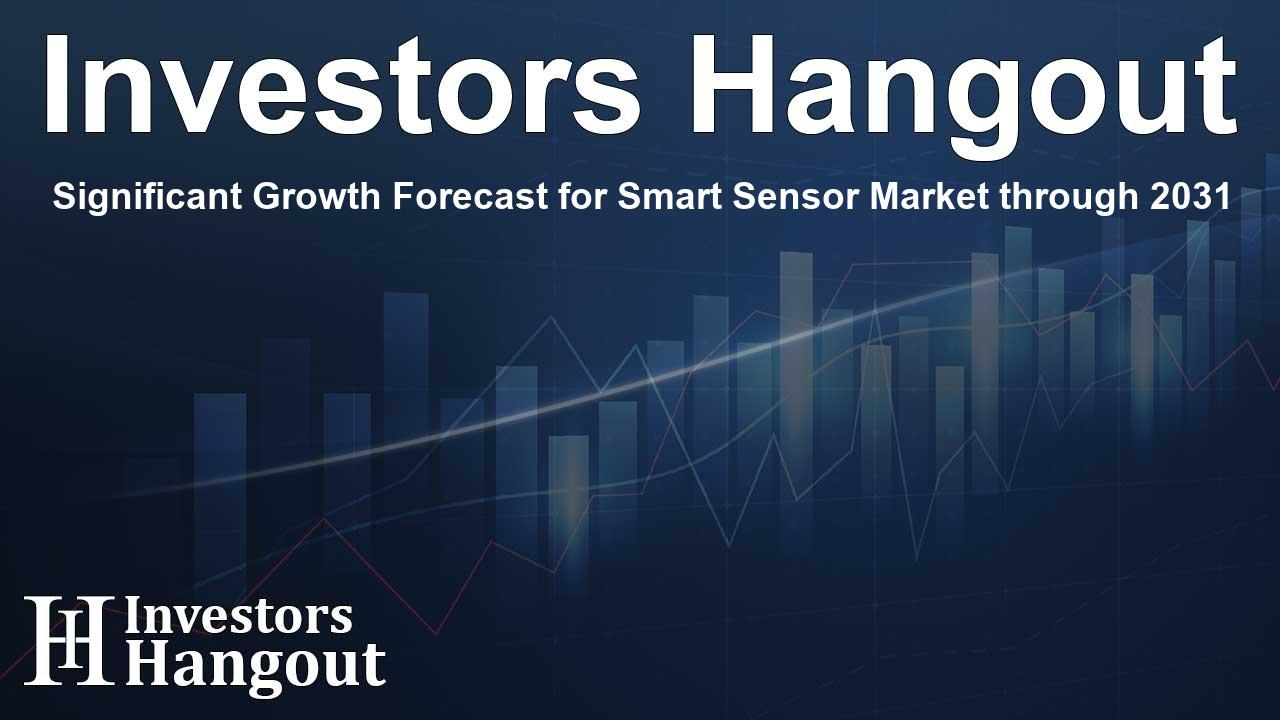Significant Growth Forecast for Smart Sensor Market through 2031

Smart Sensor Market Overview
The Smart Sensor Market is on the brink of remarkable growth, projecting a market worth of USD 240.95 billion by 2031. This growth is attributed to a compounded annual growth rate (CAGR) of approximately 17.10% from 2024 to 2031. A significant driver of this demand is the proliferation of connected devices that rely on smart sensors for data acquisition and transmission. These advancements in miniaturization and sensor technology have opened opportunities for their integration into a diverse array of products, enhancing their utility.
The Impact of Smart Sensors
Smart sensors are playing a crucial role in environmental monitoring and energy efficiency. Their applications are expanding, particularly within industrial automation. For instance, they enable real-time monitoring and control of critical parameters such as temperature, pressure, and flow rates, which optimize production processes while also boosting efficiency and lowering downtimes. This capability contributes significantly to the overall growth trajectory of the smart sensor industry.
Automotive Sector Dominance
In the automotive sector, smart sensors have taken a leading role, enhancing safety and efficiency. Their applications range from adaptive cruise control systems to collision avoidance features. With an increase in safety standards and a focus on connected and autonomous vehicle technologies, the demand for smart sensors in automobiles is escalating. This trend is further fueled by the integration of smart sensors in both hybrid and electric vehicles, pointing to a confident future for this segment.
Growing Touch Sensor Market
Among various types of smart sensors, touch sensors exhibit a robust presence in the market. These sensors are vital across multiple sectors, including consumer electronics, industrial automation, and healthcare. The increasing demand for touch-enabled devices, such as smartphones and interactive kiosks, is significantly driving this market. Additionally, their incorporation into home automation systems and automotive entertainment functionalities highlights their expansive potential.
Regional Insights: North America Leads
North America stands out as a leader in the smart sensor market, characterized by substantial R&D investments and a mature industrial sector. The presence of major market players bolsters this region's dominance. The increasing demand for smart sensors in various industries, such as automotive and consumer electronics, underscores the significant role of this region. Transitioning towards smart home technology and ADAS applications also enhances the region's growth potential.
Market Drivers and Challenges
Several factors are propelling the growth of the smart sensor market, including:
- Increasing integration of Internet of Things (IoT) technologies.
- A rising focus on automation across industries.
- The automotive sector's heightened demand for advanced sensors.
However, challenges such as a shortage of skilled labor, susceptibility to cyber threats, and complexities related to vendor lock-in may hinder market growth.
Key Players in the Smart Sensor Market
Leading industry participants, such as Analog Devices, Inc., Honeywell International Inc., and Siemens AG, are pivotal in shaping the market landscape. Their commitment to innovation and development reinforces the competitive nature of the smart sensor market, as they continually push the boundaries of technology to meet burgeoning market demands.
Conclusion
The Smart Sensor Market is poised for significant growth, driven by multifaceted industry demands and technological advancements. As key sectors leverage smart sensors for improved efficiency and safety, the future looks bright for this dynamic market. Organizations looking to capitalize on these advancements should consider the myriad applications and opportunities that smart sensors present.
Frequently Asked Questions
What is the expected value of the smart sensor market by 2031?
The smart sensor market is projected to reach USD 240.95 billion by 2031.
What factors are driving the growth of the smart sensor market?
Key drivers include the rise of IoT integration, growing automation in industries, and increased demand from the automotive sector.
Which region is leading in smart sensor adoption?
North America is leading in the adoption and utilization of smart sensors due to substantial investments in technology and innovation.
What challenges does the smart sensor market face?
Challenges include a shortage of skilled workers, cybersecurity vulnerabilities, and issues related to vendor lock-in.
Who are the key players in the smart sensor market?
Major players include Analog Devices, Inc., Honeywell International Inc., and Siemens AG among others.
About Investors Hangout
Investors Hangout is a leading online stock forum for financial discussion and learning, offering a wide range of free tools and resources. It draws in traders of all levels, who exchange market knowledge, investigate trading tactics, and keep an eye on industry developments in real time. Featuring financial articles, stock message boards, quotes, charts, company profiles, and live news updates. Through cooperative learning and a wealth of informational resources, it helps users from novices creating their first portfolios to experts honing their techniques. Join Investors Hangout today: https://investorshangout.com/
Disclaimer: The content of this article is solely for general informational purposes only; it does not represent legal, financial, or investment advice. Investors Hangout does not offer financial advice; the author is not a licensed financial advisor. Consult a qualified advisor before making any financial or investment decisions based on this article. The author's interpretation of publicly available data shapes the opinions presented here; as a result, they should not be taken as advice to purchase, sell, or hold any securities mentioned or any other investments. The author does not guarantee the accuracy, completeness, or timeliness of any material, providing it "as is." Information and market conditions may change; past performance is not indicative of future outcomes. If any of the material offered here is inaccurate, please contact us for corrections.